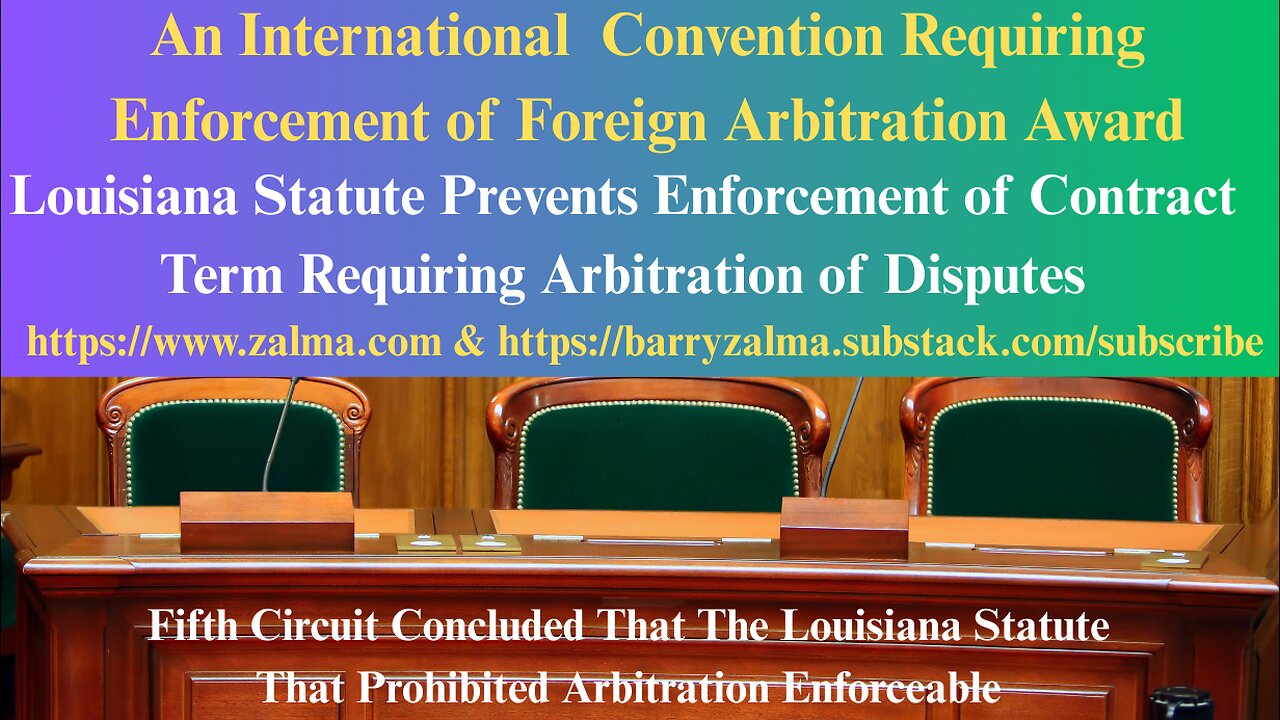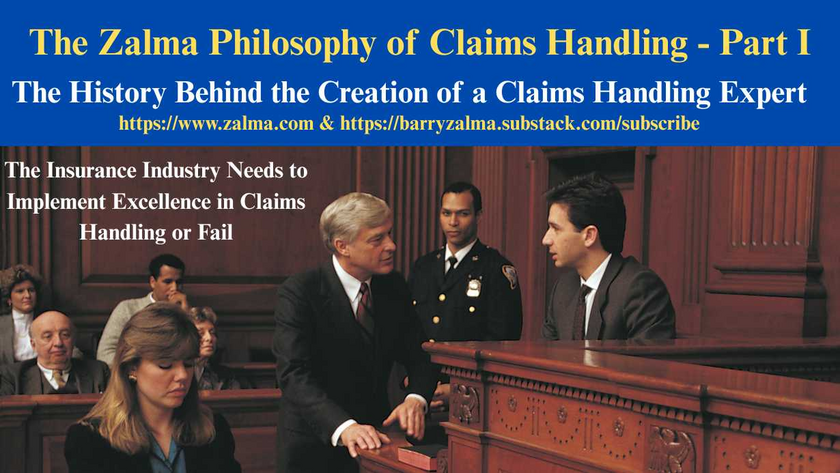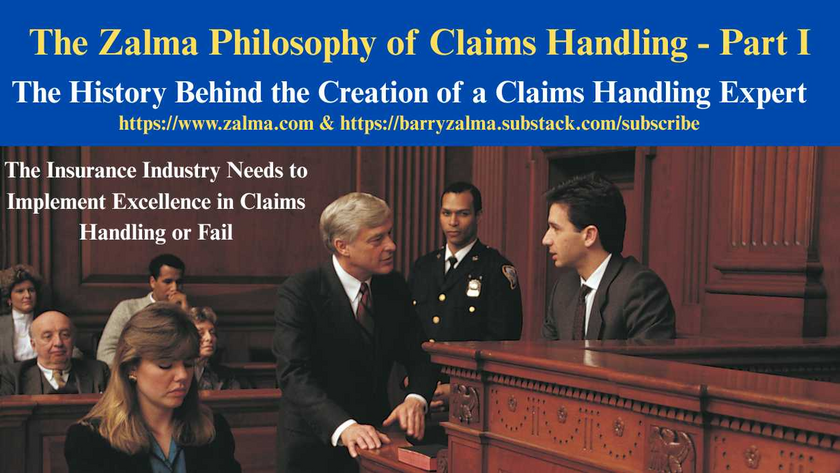
Clear & Unambiguous Exclusion Affirmed
Read the full article at https://lnkd.in/g3ps9dU7 and at https://zalma.com/blog plus more than 4200 posts.
Posted on May 17, 2022 by Barry Zalma
Amy Higgs (“Higgs”) individually and on behalf of her deceased son, Cayson Emmit Turnmire (“Cayson”), sued David Payne (“Payne”) for the negligent maintenance of his property in relation to Cayson’s death by drowning in Payne’s swimming pool. Tennessee Farmers Mutual Insurance Company (“Tennessee Farmers”), Payne’s homeowners’ insurance carrier, sued seeking declaratory judgment the Trial Court against Payne and Higgs. Tennessee Farmers argued that, due to an exclusion in Payne’s homeowners’ insurance policy against claims “arising from or in connection with the swimming pool,” it is not obligated to defend or indemnify Payne. Tennessee Farmers Mutual Insurance Company v. David Payne, et al., No. W2021-00376-COA-R3-CV, Court of Appeals of Tennessee (May 13, 2022)
Tennessee Farmers and Higgs filed cross motions for summary judgment. The Trial Court granted Tennessee Farmers’ motion and denied Higgs’ motion. Higgs appealed.
THE APPEAL
Citing the concurrent cause doctrine, Higgs argued that Tennessee Farmers must defend and indemnify Payne as, apart from the pool, certain non-excluded causes contributed to Cayson’s death-namely, Payne’s failure to fence or gate his property.
OPINION
Higgs, individually and on behalf of her deceased son, Cayson, sued Payne for the negligent maintenance of his property in relation to Cayson’s death by drowning in Payne’s swimming pool. As Higgs did laundry, Cayson wandered into Payne’s yard, climbed up on his unsecured deck, and drowned in Payne’s swimming pool. Tennessee Farmers asserted that, based on an exclusion contained in Payne’s policy, it had no obligation to defend or indemnify Payne in this matter. The exclusion states:
PERSONAL LIABILITY AND MEDICAL PAYMENTS TO OTHERS COVERAGE PROVIDED BY THIS POLICY SHALL NOT PROVIDE PROTECTION FOR ANY CLAIMS OR DAMAGES ARISING FROM OR IN CONNECTION WITH THE SWIMMING POOL ON THE INSURED PREMISES.
The Trial Court entered an order granting Tennessee Farmers’ motion for summary judgment and denying Higgs’ motion for summary judgment.
The Complaint is predicated upon negligence by Defendant as it relates to the pool where the Complaint alleges, among other things:
Defendant Payne did not have a fence or gate around the pool or his property. Rather, he had a deck that partially surrounded the aboveground pool, providing easy access to the pool[.]
The child’s death was proximately caused by Defendant’s failure to maintain his property and pool in a reasonable and safe manner and condition.
Defendant’s breaches of duty include but were not limited to:
Failing to have a fence around his pool and/or property,
Failing to have a gate to prevent access to his pool,
Failing to secure, lock, or remove the steps to the aboveground pool to prevent access to the pool,
Failing to have a pool alarm,
Failing to exercise reasonable and ordinary care under the circumstances, and
Defendant is guilty of violating Tenn[.] Code Ann[.], §68-14-801 et Seq “Katie Beth’s Law” (Pool Alarms) and said violation constitutes negligence per se and was a direct and proximate cause of the minor child’s death and injuries[.]
At the time of the incident, based on the relevant undisputed facts: Defendant’s property was insured by an all-risk policy with Tennessee Farmers Mutual Insurance Company for which he was paying a premium.
ANALYSIS
Viewing the complaint and evidence in the light most favorable to Respondent Higgs, the claims in the Complaint arise from or in connection with the swimming pool on Respondent David Payne’s property and although they may have been otherwise covered under the general terms of the “all-risk policy” the Court of Appeal concluded that it was clear that the endorsement expressly excludes coverage, and the Court finds no ambiguity in the words “arising from or in connection with the pool” or its applicability in this case[.]
Further, it is of no consequence that the policy does not explicitly provide an exclusion concerning coverage for claims or damages arising from or in connection to Defendant’s decks or other defects or deficiencies on Respondent Payne’s property such as lack of fencing because these alleged breaches of duty are linked to the swimming pool.
There is no allegation that these alleged breaches of duty were defective any way other than as it relates to the pool and there are no allegations that injuries would have resulted if there was no pool.
In this case, there is no other separate cause or non-excluded cause for the injuries. As such, the concurrent coverage theory is not applicable.
The Tennessee Supreme Court most recently addressed the concurrent cause doctrine in Clark v. Sputniks, LLC, 368 S.W.3d 431 (Tenn. 2012), a case featuring an issue of whether liability insurance coverage existed so as to cover plaintiffs’ injuries stemming from an altercation at the insured’s bar and restaurant.
Tennessee recognizes the concurrent cause doctrine, which provides that there is insurance coverage in a situation “where a nonexcluded cause is a substantial factor in producing the damage or injury, even though an excluded cause may have contributed in some form to the ultimate result and, standing alone, would have properly invoked the exclusion contained in the policy.” Allstate Ins. Co. v. Watts, 811 S.W.2d 883, 887 (Tenn. 1991).
Higgs’ mere assertion or conclusion that homeowners are duty-bound in general to fence in their property, whether they have a swimming pool or not, is unsupported by any facts or law. The absence of a fence from Payne’s property is meaningful to the question of Tennessee Farmers’ obligation to defend and indemnify this claim only if it constituted a non-excluded concurrent cause of Cayson’s death not “arising from or in connection with the swimming pool on the insured premises.”
The chain of events leading to the ultimate harm did not begin with an excluded risk; it ended with one. Moreover, the issue with Higgs’ proffered non-excluded concurrent causes is not their sequence in the chain of events leading to Cayson’s death, but whether these proffered causes constitute non-excluded concurrent causes at all. Each of Higgs’ alleged non-excluded concurrent causes are bound up inextricably with Cayson’s tragic drowning in Payne’s pool, an excluded cause under Payne’s insurance policy.
Under the facts of this case, Higgs alleged non-excluded causes of no fence or gate securing Payne’s pool or property cannot be negligent except “in connection with the swimming pool on [Payne’s] premises.” In other words, it is not a matter of “but for” the pool; it is the pool only.
The language in Payne’s insurance policy is clear and unambiguous-there is no “personal liability” or “medical payments to others” coverage for any claims or damages “arising from or in connection with the swimming pool on the insured premises.”
Higgs’ complaint alleges no non-excluded concurrent cause. Tennessee Farmers is not obligated to defend or indemnify Payne in this matter. Having held that no non-excluded concurrent cause was alleged in this case, the judgment of the Trial Court is affirmed, and this cause is remanded to the Trial Court for collection of the costs below.
ZALMA OPINION
The concurrent cause doctrine has helped insured’s obtain insurance coverage in the face of a clear and unambiguous exclusion. However, there must be a covered cause of loss that concurs with the excluded cause in effecting the damage. In this case there was only one cause of the child’s death, the pool. Ms. Higgs is not without a remedy, she may still proceed against Payne and collect any judgment against his assets.
No alt text provided for this image
(c) 2022 Barry Zalma & ClaimSchool, Inc.
Barry Zalma, Esq., CFE, now limits his practice to service as an insurance consultant specializing in insurance coverage, insurance claims handling, insurance bad faith and insurance fraud almost equally for insurers and policyholders. He practiced law in California for more than 44 years as an insurance coverage and claims handling lawyer and more than 54 years in the insurance business. He is available at http://www.zalma.com and [email protected].
Subscribe to Zalma on Insurance at locals.com https://zalmaoninsurance.local.com/subscribe.
Subscribe to Excellence in Claims Handling at https://barryzalma.substack.com/welcome.
Write to Mr. Zalma at [email protected]; http://www.zalma.com; http://zalma.com/blog; daily articles are published at https://zalma.substack.com.
Go to the podcast Zalma On Insurance at https://anchor.fm/barry-zalma; Follow Mr. Zalma on Twitter at https://twitter.com/bzalma; Go to Barry Zalma videos at Rumble.com at https://rumble.com/c/c-262921; Go to Barry Zalma on YouTube- https://www.youtube.com/channel/UCysiZklEtxZsSF9DfC0Expg; Go to the Insurance Claims Library – https://zalma.com/blog/insurance-claims-library/
Louisiana Statute Prevents Enforcement of Contract Term Requiring Arbitration of Disputes
Post 5241
Read the full article at https://www.linkedin.com/pulse/international-convention-requiring-enforcement-award-barry-sttdc, see the video at and at and at https://zalma.com/blog plus more than 5200 posts.
In Town of Vinton v. Indian Harbor Insurance Company, Nos. 24-30035, 24-30748, 24-30749, 24-30750, 24-30751, 24-30756, 24-30757, United States Court of Appeals, Fifth Circuit (December 8, 2025) municipal entities including the Town of Vinton, et al sued domestic insurers after dismissing foreign insurers with prejudice. The insurers sought arbitration under the Convention on the Recognition and Enforcement of Foreign Arbitral Awards (the “Convention”) but the court held Louisiana law — prohibiting arbitration clauses in such policies—controls, as the Convention does not apply absent foreign parties who ...

Refusal to Provide Workers’ Compensation is Expensive
Post 5240
Read the full article at https://lnkd.in/guC9dnqA, see the video at https://lnkd.in/gVxz-qmk and at https://lnkd.in/gUTAnCZw, and at https://zalma.com/blog plus more than 5200 posts.
In Illinois Department of Insurance, Insurance Compliance Department v.USA Water And Fire Restoration, Inc., And Nicholas Pacella, Individually And As Officer, Nos. 23WC021808, 18INC00228, No. 25IWCC0467, the Illinois Department of Insurance (Petitioner) initiated an investigation after the Injured Workers’ Benefit Fund (IWBF) was added to a pending workers’ compensation claim. The claim alleged a work-related injury during employment with the Respondents who failed to maintain workers’ compensation Insurance.
Company Overview:
USA Water & Fire Restoration, Inc. was incorporated on January 17, 2014, and dissolved on June 14, 2019, for failure to file annual reports and pay franchise taxes. It then operated under assumed names including USA Board Up & Glass Co. and USA Plumbing and Sewer. The business ...
Arsonist Incompetently Moves Pro Se to Avoid Prison
Post 5239
Read the full article at https://lnkd.in/gRX8TfKn, see the video at https://lnkd.in/gY3Jvnqp and at https://lnkd.in/gRCaaf-3, and at https://zalma.com/blog plus more than 5200 posts.
In Christopher A. Barosh v. Morris Houser, et al., Civ. No. 22-0769, United States District Court, E.D. Pennsylvania (November 25, 2025) a convicted arsonist and insurance fraudster moved the USDC acting in Pro se filed Objections to Magistrate Judge Reid’s Recommendation that the US District Judge dismiss his § 2254 Petition to avoid jail.
BACKGROUND
In October 2005, Barosh set fire to his girlfriend’s Philadelphia home — some 25 hours before the cancellation of the property’s insurance policy. Several witnesses saw Barosh leaving the property shortly before the fire erupted. After the fire, Barosh made “two separate admissions of guilt.”
He attempted to pay an acquaintance to provide him with an alibi for the time of the arson. The eyewitnesses, brother, and ...
The Professional Claims Handler
Post 5219
Posted on October 31, 2025 by Barry Zalma
An Insurance claims professionals should be a person who:
Can read and understand the insurance policies issued by the insurer.
Understands the promises made by the policy.
Understand their obligation, as an insurer’s claims staff, to fulfill the promises made.
Are competent investigators.
Have empathy and recognize the difference between empathy and sympathy.
Understand medicine relating to traumatic injuries and are sufficiently versed in tort law to deal with lawyers as equals.
Understand how to repair damage to real and personal property and the value of the repairs or the property.
Understand how to negotiate a fair and reasonable settlement with the insured that is fair and reasonable to both the insured and the insurer.
How to Create Claims Professionals
To avoid fraudulent claims, claims of breach of contract, bad faith, punitive damages, unresolved losses, and to make a profit, insurers ...

The History Behind the Creation of a Claims Handling Expert
The Insurance Industry Needs to Implement Excellence in Claims Handling or Fail
Post 5210
This is a change from my normal blog postings. It is my attempt. in more than one post, to explain the need for professional claims representatives who comply with the basic custom and practice of the insurance industry. This statement of my philosophy on claims handling starts with my history as a claims adjuster, insurance defense and coverage lawyer and insurance claims handling expert.
My Training to be an Insurance Claims Adjuster
When I was discharged from the US Army in 1967 I was hired as an insurance adjuster trainee by a professional and well respected insurance company. The insurer took a chance on me because I had been an Army Intelligence Investigator for my three years in the military and could use that training and experience to be a basis to become a professional insurance adjuster.
I was initially sat at a desk reading a text-book on insurance ...

The History Behind the Creation of a Claims Handling Expert
The Insurance Industry Needs to Implement Excellence in Claims Handling or Fail
Post 5210
This is a change from my normal blog postings. It is my attempt. in more than one post, to explain the need for professional claims representatives who comply with the basic custom and practice of the insurance industry. This statement of my philosophy on claims handling starts with my history as a claims adjuster, insurance defense and coverage lawyer and insurance claims handling expert.
My Training to be an Insurance Claims Adjuster
When I was discharged from the US Army in 1967 I was hired as an insurance adjuster trainee by a professional and well respected insurance company. The insurer took a chance on me because I had been an Army Intelligence Investigator for my three years in the military and could use that training and experience to be a basis to become a professional insurance adjuster.
I was initially sat at a desk reading a text-book on insurance ...














